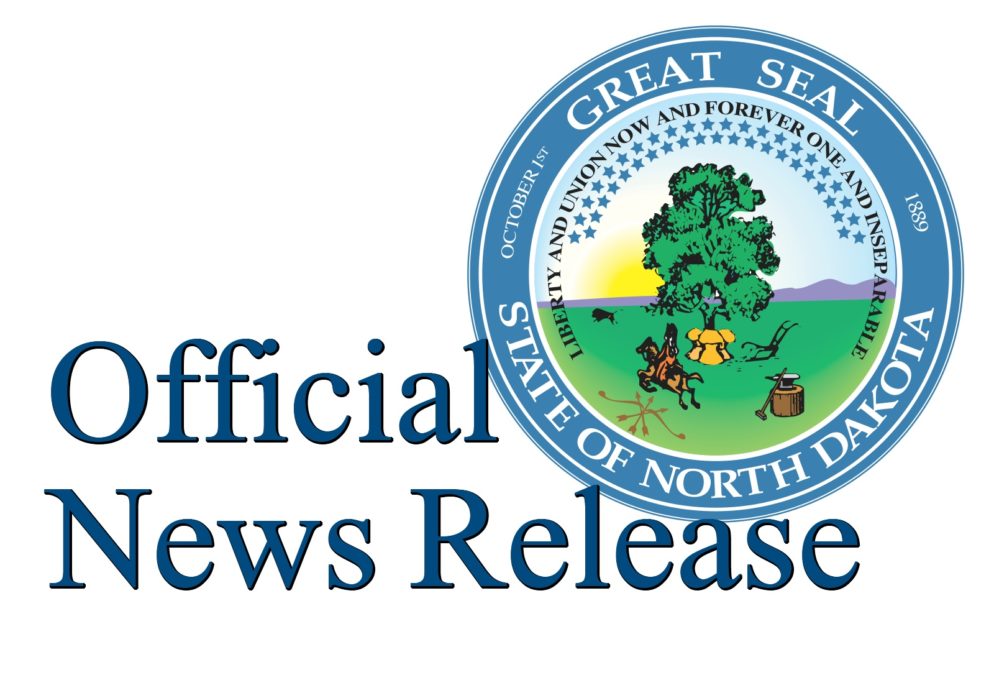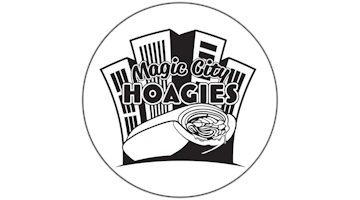Governor Dalyrmple released his proposed budget for the 2015-2017 biennium. The proposed $15.7 billion budget is a record amount that includes significant spending for oil impacted counties.
For independent press coverage of the budget, read Nick Smith’s article on the Bismarck Tribune.
The Governor’s complete news release on the budget including pdf versions of charts used at the press conference follows below.
— Official News Release —
BISMARCK, N.D. – Gov. Jack Dalrymple today released his 2015-2017 Executive Budget, a structurally balanced plan that provides more tax relief, strong support for western North Dakota as well as major investments in education, outdoor recreation and other statewide priorities.
“With this budget, we are taking advantage of North Dakota’s success and strong financial position to advance several initiatives that will have a lasting effect on our quality of life,” Dalrymple said. “Because of our strong revenues and sound fiscal management we can make major, one-time investments in our priorities while also providing additional tax relief. Here in North Dakota, we can make meaningful investments in our people, our places and the many opportunities for continued progress.”
Dalrymple’s Executive Budget includes:
- A 5.4 percent increase in General Fund appropriations compared to the current biennium.
- $408 million in additional tax relief during the 2015-2017 biennium. With Dalrymple’s latest tax relief plan, North Dakota taxpayers will have received $4.3 billion in tax savings since 2009.
- $3 billion dedicated solely to statewide infrastructure improvements, including highways, roads, water supply systems, airports and critical flood control projects.
- Major funding enhancements totaling $90.5 million for state and local law enforcement agencies, including funding for an additional 19 positions within the Bureau of Criminal Investigation.
- A total of $3.7 billion to assist North Dakota’s oil and gas production region address a wide-range of impacts created by rapid growth.
- Support to strengthen North Dakota’s environmental protections and regulatory oversight of the oil and gas industries.
- Funding for K-12 education and higher education that focus on student success and college affordability.
- An $80.4 million package to improve the state’s park system and to fund statewide conservation projects.
SOUND FISCAL MANAGEMENT
Revenues Exceed Expenditures
Ongoing Expenditures
The Executive Budget calls for General Fund ongoing revenues during the 2015-2017 biennium to total about $5.4 billion while ongoing expenditures total $5 billion (Chart 1). The budget represents a 5.4 percent increase in General Fund appropriations compared to the current biennium. The vast majority of this increase in General Fund appropriations is necessary to address the growing demand for state resources and essential services. Ongoing General Fund spending is limited to $300 million of oil and gas tax revenues as required by statute. All other oil tax revenues are dedicated for special purposes as required by the state constitution or state statute (Chart 2).
One-time Expenditures
Our budget proposal includes $2.2 billion in one-time General Fund expenditures for the 2015-2017 biennium. North Dakota’s strong revenues allow for significant, one-time investments that do not add to the state’s ongoing obligations. These one-time investments include “jump-start” funding so that the state’s oil and gas region can begin projects at the onset of the 2015 construction season; funding for statewide road and water supply projects; funding for state park improvements and conservation projects; funding for affordable housing projects; and funding to help build schools as a result of rapid growth in student enrollments.
Reserves for the Future
By the end of the current biennium, reserves from the ending General Fund balance, the Strategic Investment and Improvements Fund, the Property Tax Relief Fund, the Budget Stabilization Fund and the Foundation Aid Stabilization Fund will total about $3.7 billion. These reserve funds are projected to total about $3.5 billion on June 30, 2017 (Chart 3). In the same time period, the balance of the Legacy Fund, which is not available until 2017, will increase from $3.5 billion to about $6 billion.
ADDITIONAL TAX RELIEF
With ongoing and one-time expenditures accounted for and reserves secured, Dalrymple is recommending additional tax relief for hard-working people of North Dakota. (Chart 4)
In all, the Executive Budget includes an $408 million in additional tax relief during the upcoming biennium. Dalrymple’s tax relief plan calls for continuing the property tax buydown approved during the 63rd Legislative Session, at a projected cost of $250 million.
The Executive Budget recommends that the state assume a larger share of the cost of county social services. As a result, additional property tax relief will be made permanent. During the 2015-2017 biennium, this plan creates a mill levy reduction totaling $23 million in permanent property tax relief.
Dalrymple also proposes a $100 million reduction in individual income tax; $25 million in corporate tax relief and an expansion of the Homestead Tax Credit to make more people eligible for this tax savings by raising the maximum income threshold from $42,000 to $50,000.
With these additional tax reductions and all other tax relief provided since 2009, North Dakota will have reduced its state taxes by $4.3 billion.
STATEWIDE INFRASTRUCTURE NEEDS
Economic growth cannot be sustained without strong investments in infrastructure and our budget addresses infrastructure needs in every region of the state.
During the 2015-2017 biennium, the state will invest $3 billion solely in statewide infrastructure improvements. This commitment includes funding for highway, road and street improvements as well as funding for affordable housing projects, water supply systems and flood control projects.
Additionally, the Executive Budget also recommends transferring $100 million in Bank of North Dakota profits to the Public Finance Agency to create a revolving loan fund for essential public infrastructure projects throughout the state.
Extraordinary Needs in Western North Dakota
After a careful analysis of county and city needs in the state’s oil production region, Dalrymple recommends that the legislature adjust the oil production tax formula. In the Executive Budget Dalrymple proposes for the 2015-2017 biennium, increasing the region’s share of the tax revenue to 60 percent after local counties collect $5 million in gross oil production tax revenues. Dalrymple said he will ask the legislature to discuss an appropriate phase down in the revenue percentage as the region’s extraordinary needs taper off.
With the funding formula adjustment, the oil production tax will generate $1.7 billion for the state’s oil counties and their political subdivisions – $1 billion more than what the region will receive from this funding source during the current biennium (Chart 5).
The Executive Budget also includes $873 million in up-front, supplemental funding so that officials in the oil production region have the funding they need to begin infrastructure improvement projects at the onset of the 2015 construction season. Also included in the budget is $119 million in new Energy Impact grant funds to help address a wide range of impacts created by rapid growth.
Under this budget proposal, the state will invest a total of $3.7 billion in western North Dakota during the upcoming biennium.
Expanding Housing Development
Our strong economy is keeping North Dakotans home and attracting new residents. The Executive Budget includes another increase in state support to help meet North Dakota’s housing needs.
Dalrymple recommends expanding the Housing Incentive Fund from $35 million to $50 million, with $30 million in state income tax credits and $20 million in direct investment. Developers can access this loan fund in exchange for providing rental units to low income and moderate income residents.
In the past four years, the state has leveraged $90 million in tax credits and incentive funds to support the development of more than 2,500 affordable housing units throughout North Dakota.
We also recommend providing an additional $12 million in Flex PACE buydown funds to support an estimated $125 million in residential development.
INVESTMENTS IN WATER
Flood Protection
Our ongoing commitment to improving the state’s infrastructure includes meeting critical needs for quality water supplies and flood control projects.
During the last biennium, the state provided $61 million toward permanent flood protection in the Souris River Basin, including funds for home acquisitions, engineering and design. We now recommend an additional $110 million to help give the people of Minot and surrounding areas the flood protection they need.
For flood protection in the Fargo area, current state law calls for an additional $69 million this biennium while Fargo-area officials work toward a permanent solution to Red River flooding. The state has already provided $175 million for Fargo-area flood protection and has committed to contributing a total of $450 million towards a permanent flood protection project. Thus far, all funds have been spent on levee improvements around Fargo and other communities. Additional funds for the upcoming biennium may be warranted if projects move forward more quickly.
We also support funding the continuing operations of the Devils Lake water outlets and to help fund other flood control projects like those in Grafton, Williston and on the Sheyenne River.
Water Supply
During the 2015-2017 biennium, we recommend investing nearly $600 million solely in rural and municipal water supply projects.
Our budget includes $120 million for the Western Area Water Supply project; $100 million for the Southwest Pipeline Project and $18 million for the Northwest Area Water Supply. We also support the efforts of the Valley Prosperity Partnership to ensure water security for the Red River Valley. To that end, we recommend $150 million for the Red River Water Supply Project. We also support a state commitment of more than $100 million in grants and loans for a Grand Forks water treatment plant that will make possible more economic growth in northeast North Dakota.
PUBLIC SAFETY & ENVIRONMENTAL PROTECTIONS
As our state grows, in both population and economic activity, we are committed to keeping North Dakota one of the safest states in America. Our budget commits $90 million in the area of law enforcement alone.
The budget includes $27.5 million to complete the new Law Enforcement Training Academy and we support the addition of four more Highway Patrol troopers to serve in western North Dakota. With these four positions, we will expand the Highway Patrol with 25 additional troopers in just the last three years.
For local law enforcement officers in western North Dakota, the region’s rapid growth has created significant challenges. Our budget includes $20 million in law enforcement grant funds to help equip, train and staff police departments and sheriff offices in Oil Country.
We also support the Attorney General’s request to add 19 additional staff within the Bureau of Criminal Investigation. These additional BCI positions include nine criminal investigators, three intelligence analysts, a forensic scientist and a victim advocate. With the assistance of the FBI, we are letting drug dealers and human traffickers know that North Dakota is the wrong place to do business.
Our commitment to public safety includes funding for an additional 13 parole and probation officers, and other staff within the Department of Corrections. We also recommend $30 million to build a new minimum security correctional center. Flood damage, mold and ongoing maintenance concerns necessitate that we replace the existing Missouri River Correctional Center with a new facility just to the northeast and on higher ground.
The remarkable amount of new commerce in our state requires that we also continue to strengthen our health and environmental protections as well as our oversight of North Dakota’s oil and gas drilling activities. For that purpose, we are recommending 19 new positions in our Department of Health for greater protections against environmental hazards and public health threats. We also recommend funding 22 additional positions within the Oil and Gas Division. These positions include petroleum engineers and field inspectors to further ensure that environmental regulations are followed.
In the Executive Budget, Dalrymple also supports the request of the Public Service Commission for eight positions to monitor rail safety and pipeline integrity. This state focus on rail and pipeline safety goes beyond what is provided by the federal Pipeline and Hazardous Materials Safety Administration.
In all, our budget recommends funding for 247 additional employees, excluding Higher Education, to help us meet the needs of our growing state. Of these positions, 50 are for law enforcement and another 87 are dedicated to public safety, public health, the judicial system and environmental oversight.
INVESTMENTS IN QUALITY EDUCATION
Early Childhood Education
The value of early childhood education is becoming more appreciated every day.
The Executive Budget includes $6 million to fund a support grants to support certified Pre-K programs, whether they are offered in a public school, a private school, or a classroom organized by a non-profit organization.
K-12 Education
Our K-12 funding proposal includes a three-percent increase in the state’s per-student payment in each year of the 2015-2017 biennium. This funding enhancement, combined with the added cost of higher student enrollments, is an increased commitment of $104 million over current biennium spending.
We also propose expanding the state’s rapid enrollment grant program to make more schools eligible for this funding. Our budget includes $14.8 million for these grants, and a two-tier system to expand eligibility. The Executive Budget also includes $300 million for the school construction revolving loan program.
Higher Education
The Executive Budget includes a $114-million increase in the main formula payments for funding our university system’s 11 institutions. A 6.4 percent increase in the number of student credit hours accounts for a major portion of this funding increase.
Our budget recommendation for Higher Education focuses on students, with significant increases to our scholarship programs, a freeze in tuition at our two-year colleges, financial assistance for students who pursue occupations in high-demand fields and system-wide security enhancements.
In all, our budget includes $50 million in student financial assistance programs. We recommend increasing North Dakota’s merit-based scholarship program to a level of $10,000 per student rather than today’s limit of $6,000. We also recommend a four-percent funding increase in needs-based scholarships each year of the biennium.
Our needs-based scholarships help reduce the costs of higher education for about 7,200 students each year, and we expect to award about 1,400 new merit-based scholarships each year of the biennium.
Our budget also includes $7.6 million in tuition buydown and student loan forgiveness programs for students who pursue and obtain jobs in high-demand fields.
We also recommend $145 million for capital projects, which as a group, eliminate $42 million in deferred maintenance. We recommend $62 million to complete the UND School of Medicine; $26 million to demolish two unusable buildings at Valley City State and construct a new fine arts center; and $16 million to rebuild an airport apron for the University of North Dakota School of Aviation. We also support other capital projects at Valley City State, Dakota College Bottineau, and the State College of Science.
AGRICULTURE
Agriculture is the backbone of North Dakota, and one of the best ways we can support our farmers and ranchers is through research.
We recommend new investments totaling $23 million to advance important plant and animal research at NDSU’s research centers and to enhance agricultural extension services. This investment includes, for example, $800,000 and two additional positions at NDSU to support bioinformatics research at the main research center. Our budget also includes $18 million to construct a veterinary diagnostic lab on the NDSU campus, as well as capital improvements at other research centers.
Our farmers and ranchers lead the nation in the production of many crops, and their success is rooted in the important research that keeps their operations productive and competitive in the world market.
WORKFORCE DEVELOPMENT
For more than a decade, we have focused our economic development efforts on creating jobs and growing our targeted industries. Now, we must take that mission to the next level by focusing on building a workforce for the future and capitalizing on emerging industries and innovations.
To ensure that North Dakota’s workforce is well trained for tomorrow’s careers and that our growing businesses have a consistent, qualified pool of skilled workers, we are recommending nearly $26 million in workforce grants and programs across several of our state agencies.
Our recommendations include $6 million for workforce development grants to tribal community colleges; $5 million to the North Dakota State College of Science to expand its workforce training program in Fargo and to develop a long-range plan for career and technical education in Cass County; $1.5 million for workforce enhancement grants to our two-year colleges; and a $2 million, one-time grant to the North Dakota Safety Council for construction of a new training facility to enhance workplace safety.
UAS Support
The budget also includes $4.2 million for operating the Unmanned Aerial System Airspace Integration Test Site. Of that amount, $1.2 million will be used as a business incentive match to advance private sector UAS business development. In addition, we are including $5 million to support the Grand Sky Business Park, contingent upon private sector development as part of the enhanced use lease with the Grand Forks Air Force Base. We are also recommending $1.5 million for matching grants to assist with base retention efforts in communities with Air Force bases or Air National Guard facilities.
To support working parents, we are recommending $3 million in grants for new or expanded childcare facilities. We also recommend additional funding for the Train ND program and for our new workforce recruitment campaign called, “Find the Good Life.”
OUTDOOR RECREATION AND CONSERVATION
Two years ago, we proposed the creation of a conservation grant fund designed to increase the opportunity for great outdoor experiences in our state. The legislature agreed, and established the Outdoor Heritage Fund at a potential funding level of $30 million.
This budget recommends that the Outdoor Heritage Fund be increased to $50 million for the biennium, and the formula be revised to ensure that the targeted funding level is achieved. The advisory committee is doing an excellent job, and interest in the grant program is growing. We can show everyone that preserving the outdoors is a top priority in North Dakota without a constitutional mandate.
Our budget also recommends several major enhancements to our state park system. These are one-time investments that will provide more outdoor recreation for our citizens for years to come. Our budget includes $10 million for the development of a 200-acre day park along the Missouri River in south Bismarck. This is existing state land that can provide wonderful public access to the Missouri River. Our recommendation also includes major upgrades to Lake Sakakawea State Park at Pick City and nine other state parks across the state, totaling $30 million in new park investments.
HEALTH AND HUMAN SERVICES
As we continue to make sound investments in our priorities, our most important responsibility will always be caring for our people. Our budget provides for the needs of our seniors, our veterans, and our most vulnerable citizens.
We are recommending an increase of $6.6 million to expand behavioral health services across the state. The increase will fund a mobile, on-call crisis service to connect clients with the mental health services they need for recovery. With this funding, we will also enhance local health services for the treatment of mental illness and chemical dependency; provide employment support services for those with severe mental illness or traumatic brain injury; and we will fund an expansion to the student loan forgiveness program designed to attract and retain mental health professionals.
Home and community based services are essential for helping people remain in their homes and communities. Therefore, we are recommending an increase of $6.2 million to expand these resources, including the enhancement of protective services for vulnerable adults. It also includes an increase of $3 million to expand services for those with autism and to increase the eligibility age for autistic children in the Medicaid waiver.
Long-Term Care and Other Healthcare Providers
It is important that we continue to help all of our human service providers address rising costs and to maintain a high standard of care. That is why we are recommending a four-percent inflationary increase for each year of the biennium to nursing homes, senior meal providers, healthcare providers, and providers serving people with developmental disabilities and mental illness.
MILITARY AND VETERANS
For our veterans and our men and women in uniform our deepest gratitude is not enough. We must also show them our appreciation in tangible ways.
Our budget maintains full funding for the Veterans’ Bonus Program, including bonus pay for overseas and domestic deployments; the tuition waiver program; counselors to assist our soldiers and their families; and outreach centers for veterans and service members.
In addition, our budget includes more than $500,000 to establish ND Cares, a coalition of statewide services dedicated to providing an accessible, seamless network of support. Through this coalition, veterans, service members and their families will have easier, simplified access to the benefits and programs they have earned and deserve.
“This budget plan is ambitious, but we have once again taken great care to make sure we have developed a budget that is balanced and sustainable,” Dalrymple said. “The Executive Budget represents a vision for our state. A vision for growth, for opportunity and a vision for an enhanced quality of life that is second to none.”



